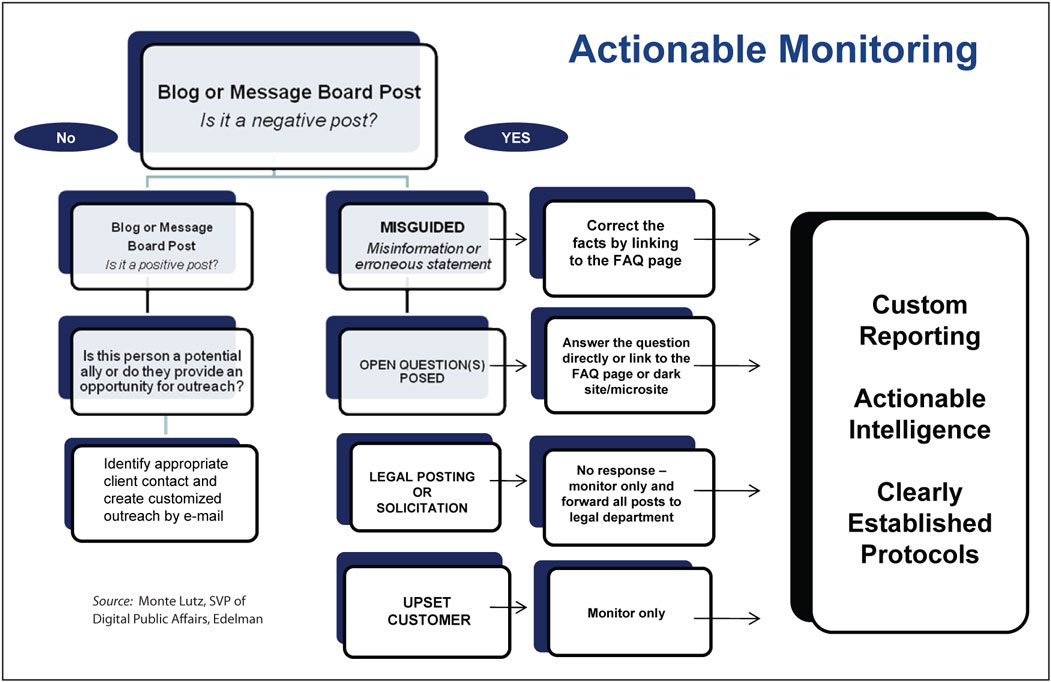“From listening comes wisdom and from speaking, repentance.”
So goes the old proverb, and nowhere is it more relevant than in social media. After all, with the vast number of online platforms enabling universally broadcast conversations, everyone has an audience somewhere. The question is, how well does that audience listen?
Communications executives struggle with this on a minute-by-minute basis. It’s their job to get messages in front of target audiences and, more importantly, to make those messages ones that said audiences want to listen to. And therein lies the problem.
The first step in nearly every expert-recommended communications process is simple: Identify target audiences, and listen to what they’re saying. For executives whose job it is to get others to listen, closing their mouths and opening their ears first is easier said than done. But doing so—that is, monitoring online conversations that are relevant to their brands—will increase the success rate of any communications effort, be it crisis management, media outreach, customer relations or reputation management. The good news: Listening just got easier.

KEEP IT SIMPLE
“It’s easy to get lost in the maze and forget why you started monitoring the conversation in the first place,” says Monte Lutz, senior vice president of digital public affairs at Edelman.
Indeed, monitoring conversations just because you think you should won’t give you meaningful insights into the audiences you want to influence, and magnitude has a lot to do with it. Listening/monitoring is exponentially easier thanks to the explosion of available tools that are free and user-friendly. Because it’s so easy, executives could fall into the trap of monitoring more than is necessary, making the “what’s it all mean?” question all the more unanswerable.
To cut through the clutter, Lutz recommends asking yourself two questions:
• Who are the 100 influencers you need to reach?
• What are the seven Web sites your stakeholders go to for information?
There are practical ways of arriving at answers. Tools like Technorati and Google Blog Search allow you to see how different blogs stack up in terms of ranking, influence and engagement with their audiences. For example, the number of comments blog posts receive can measure a blogger’s influence over and engagement with their audience. Katie Paine, president of KDPaine & Partners, offers basic benchmarks and metrics for gauging engagement:
• Comments (engaged = 3-13 comments per post; hyper-engaged = 15-35 comments per post)
• Number of links
• Digg/StumbleUpon
• Number of Facebook friends
• Number of Twitter followers, retweets
• Ratings ( Yelp, etc.)
• Tone of discussions
As for specific tools that can deliver these metrics, consider the following, recommended by Ted Weismann, senior vice president of Lois Paul & Partners:
• Retweetist: Measures the number of retweets received by any given Twitter user.
• Lexicon: Tool for monitoring/analyzing wall discussions on Facebook.
• Backtype: Monitors blog comments.
• BoardReader: Dedicated to message boards and forums.
• SocialMention: It’s the social-media equivalent of Google Alerts.
Knowing how engaged certain online users are helps whittle down the number you need to monitor. Why listen to 1,000 different people’s posts or Twitter updates if only 50 of them actually have influence over their readers/followers?
BITE YOUR TONGUE
Once you’ve identified the conversations worth monitoring, the information will start pouring in, and inevitably you will hear mentions of your brand that strike a nerve. But, as the proverb referred to earlier implies, speaking out too soon might require you to ask forgiveness down the road. That’s why it is important to establish a standard process for determining if conversations/comments warrant a response.
Lutz recommends creating a decision tree similar to the one shown here (see “Actionable Marketing” chart), which can be referenced in any situation.
REPORT, REVISE, REPEAT
As you monitor conversations about your brand over time, you will accumulate incredible amounts of information, all of which should be evaluated and analyzed to help shape future communications strategies. But remember:
“It’s not all about the numbers,” says Paula Berg, manager of emerging media for Southwest Airlines. “It’s about reading between the numbers and looking for ‘aha!’ moments.”
Those “aha!” moments are what will drive future efforts, which is why analyzing and reporting on intelligence gathered from online conversations is a critical part of listening strategies.
“Reporting is as much for you as it is for anyone else,” Berg says. “If you’re not dazzled, don’t expect anyone else to be.” PRN
CONTACTS:
Monte Lutz, [email protected]; Paula Berg, [email protected]; Katie Paine, [email protected]; Ted Weismann, [email protected]
